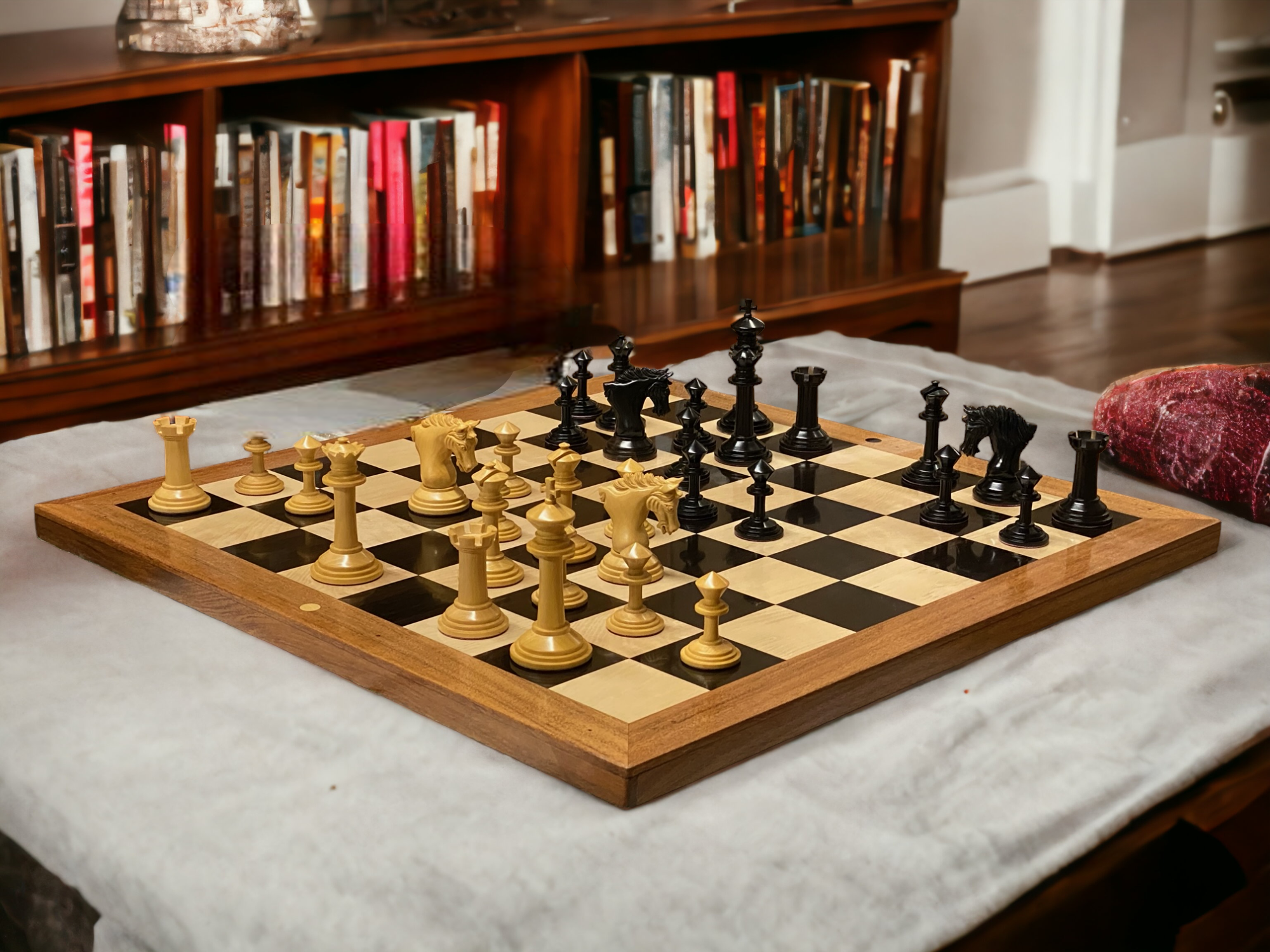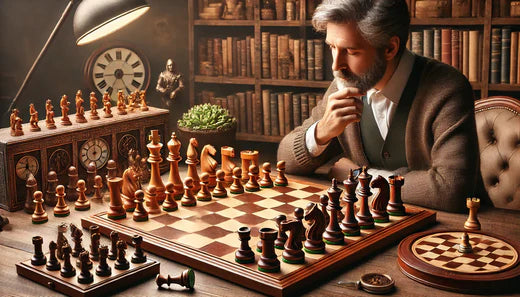The Intellectual Arena:
Chess, a timeless board game, stands as a beacon of intellectual challenge and strategic brilliance. The chessboard, with its 64 squares and distinctive pieces, serves as the battleground where players engage in a mental duel. In this comprehensive exploration, we delve into the rich history, rules, strategies, and enduring appeal of the chess board game.
The Historical Tapestry:
The roots of chess can be traced back over a millennium, creating a historical tapestry that spans cultures and continents. Originating in ancient India, the game of chaturanga laid the groundwork for what would evolve into modern chess. As the game spread to Persia, it underwent transformations, adopting new pieces and strategies. The Arab world played a crucial role in transmitting chess to Europe during the medieval period, where it continued to evolve.
The Standard Chessboard Game Setup:
A standard chessboard consists of 64 squares arranged in an 8x8 grid. The squares alternate between light and dark colors, creating the iconic checkerboard pattern. At the beginning of a game, each player is entrusted with an army of 16 pieces—comprising pawns, knights, bishops, rooks, a queen, and a king—positioned on their respective sides of the board.
Rules of Engagement:
The chess board game operates within a framework of precise rules, governing the movement and interactions of each piece. The objective is clear: checkmate the opponent's king. Understanding the unique attributes and movements of each piece is fundamental to mastering the game.
- Pawns: Pawns move forward but capture diagonally. Their initial double-step option and end passant rule add strategic depth.
- Knights: Knights have a distinctive L-shaped move, allowing them to jump over other pieces. This unique movement contributes to their flexibility and strategic importance.
- Bishops: Bishops move diagonally across the board. Their ability to control long diagonals makes them powerful assets in the mid to endgame.
- Rooks: Rooks move horizontally or vertically, covering files and ranks. Their role in controlling open lines and supporting pawn structures is crucial.
- Queen: The queen combines the powers of the rook and bishop, moving horizontally, vertically, or diagonally. It is a potent force in both offense and defense.
- King: The king moves one square in any direction. While not as mobile as other pieces, its safety is paramount, and it can execute a special move called castling under specific conditions.
Strategies and Tactics:
The beauty of chess lies in its complexity and the myriad strategies players can employ. From opening gambits to mid-game maneuvers and endgame finesse, the chessboard is a canvas for strategic brilliance.
- Openings: Chess openings set the stage for the game. Players aim to control the center, develop pieces harmoniously, and ensure the safety of their king. Common openings include the Ruy Lopez, Sicilian Defense, and Queen's Gambit.
- Middle Game: As pieces engage and the board dynamic evolves, players focus on piece coordination, controlling key squares, and anticipating their opponent's moves. Tactical opportunities, such as forks and pins, often arise in the middle game.
- Endgame: The endgame requires finesse in converting advantages into a decisive outcome. King activity, pawn promotion, and piece coordination become critical. Endgame studies showcase the depth of strategic understanding.
Enduring Appeal:
The enduring appeal of the chess board game transcends generations and cultures. Its universal recognition as a symbol of intellectual prowess has cemented its place as a timeless pastime. Several factors contribute to its enduring popularity:
- Intellectual Challenge: Chess is a game of infinite possibilities, challenging players to think several moves ahead, consider multiple variations, and anticipate their opponent's responses.
- Strategic Depth: The strategic depth of chess ensures that there is always room for improvement. Whether one is a novice or a grandmaster, the game offers an ongoing journey of exploration and mastery.
- Cultural Significance: Chess has woven itself into the fabric of various cultures, featuring prominently in literature, art, and even political symbolism. Its universal appeal makes it a game that transcends borders.
- Accessibility: The simplicity of the chessboard, combined with the depth of the game, makes chess accessible to players of all ages. The basic rules can be learned quickly, but the mastery of the game is a lifelong pursuit.
Educational Benefits:
Beyond its recreational value, the chess board game offers a myriad of educational benefits, making it a popular tool for cognitive development:
- Critical Thinking: Chess enhances critical thinking skills by requiring players to analyze positions, evaluate options, and make informed decisions.
- Problem Solving: The game presents continuous problem-solving opportunities, fostering a proactive approach to challenges.
- Concentration: Chess demands concentration and focus, helping players develop mental discipline and the ability to maintain attention over extended periods.
- Memory Improvement: Memorizing openings, patterns, and positions contributes to memory improvement, a skill applicable in various aspects of life.
Community and Competitions:
The chess community is a vibrant and diverse group of individuals united by their passion for the game. Local chess clubs, online platforms, and international competitions provide avenues for players to connect, learn, and compete.
- Local Clubs: Chess clubs serve as hubs for players to gather, play, and share their knowledge. These local communities contribute to the growth of the game at the grassroots level.
- Online Platforms: The digital era has brought chess to online platforms, enabling players to engage in games, participate in tournaments, and connect with opponents from around the world.
- Competitions: From local championships to international grandmaster tournaments, chess competitions showcase the highest levels of skill and strategy. World Chess Championships, such as those governed by FIDE, attract global attention.
Adaptations and Variations:
While the standard chess board game remains iconic, numerous adaptations and variations have emerged over the years. These variations cater to diverse preferences and introduce exciting twists to the traditional game
- Speed Chess: Speed chess, or blitz chess, involves fast-paced games with limited time for each move. This format tests players' ability to think on their feet.
- Chess Variants: Variants like Fischer Random Chess, where the starting positions are randomized, or Three-check Chess, where players aim to check their opponent three times, add unique challenges.
- Online Chess: The advent of online platforms has revolutionized the accessibility of chess. Players can engage in games, participate in tournaments, and receive coaching from the comfort of their homes.



